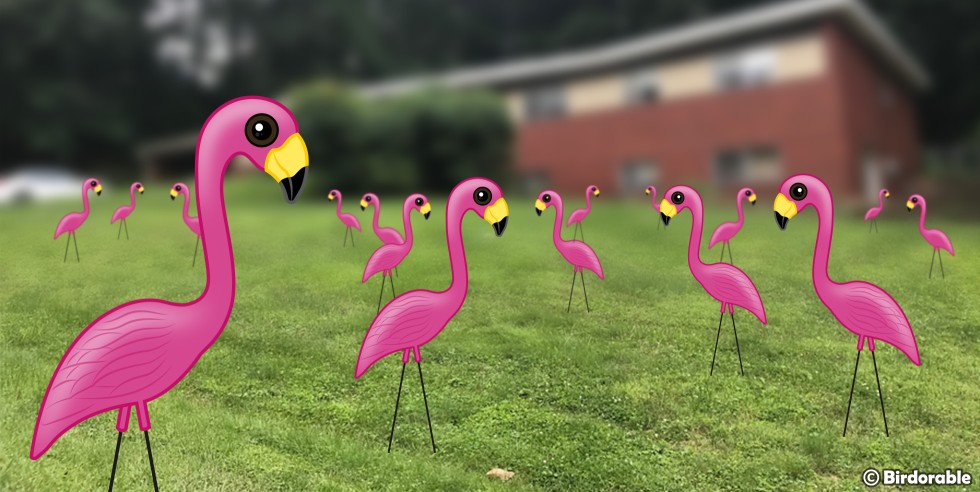Flamingo Extreme Facts & Oddities

Flamingo Week continues today with some interesting flamingo extremes and odd facts about this family of pink birds.
Extremely Social Birds
Flamingos live in colonies that may number thousands of individuals. Breeding is also colonial, with birds typically separating into smaller groups of 7-25 pairs. Breeding follows synchronized dancing displays whicih are performed by both male and female birds.
The range of the James's, Chilean, and Andean Flamingo overlap in some areas. These social birds of different species will live in colonies together and even share nesting sites.
Popular In Plastic
In the United States, plastic pink flamingos are a famous kitschy lawn ornament. The decorations were first designed for the U.S. market in 1957. While some homeowners associations ban the plastic pinkies, the city of Madison, Wisconsin designated the plastic flamingo as the city's official bird in 2009.
Unique Feeding Adaptations
Flamingos are omnivores. They filter-feed on brine shrimp, blue-green algea, small insects, mollusks, and other small aquatic animals. Flamingo bills have a unique shape designed to filter feed, separating mud and silt from their food. The bill is used to filter in an upside-down position.
Another special filtering anatomical adaptation flamingos have is lamellae, hairy structures that line their beaks and tongues. Their long legs allow them to stand in water of varying depths, and their webbed feet are used to stir up silt in their search for food items.

Pink Milk?
Both male and female parent flamingos feed their young chicks a sort of crop "milk", a fat and protein-rich substance produced in upper digestive tract glands and expelled through the beak. This milk is not actually pink. It is similar to the pigeon milk fed to squabs by parent birds in the pigeon and dove family.
Old Flamingos
A Greater Flamingo resident at the Adelaide Zoo in Australia was believed to be at least 83 years old at the time of its death in 2014. That is considerably older than the known longevity record for a wild Greater Flamingo, which was at least 27 years and 6 months, recorded via a rediscovered living banded bird in France.
The longevity record for a wild American Flamingo is just over 13 years, determined via a banding program.
The Most Endangered Flamingo
The Andean Flamingo is considered to be Vulnerable to Extinction. A rapid population decline occured during the mid-1980s to the mid-1990s, reducing the global number of wild birds to less than 35,000. Today the population is considered to be stable.
The Most Abundant Flamingo
The Lesser Flamingo is the most abundant species of flamingo, yet it is considered to be Near Threatened due to threats including breeding site degredation.
Height Extremes
While all flamingos are considered to be relatively tall birds, the tallest of the bunch is the aptly named Greater Flamingo, reaching the greatest height at up to 59 inches tall (approximately 150 cm). The smallest is the also aptly named Lesser Flamingo, which may reach only 25 to 35 inches in height (approximately 63 to 89 cm).














Comments
Leave a comment
Thank you!